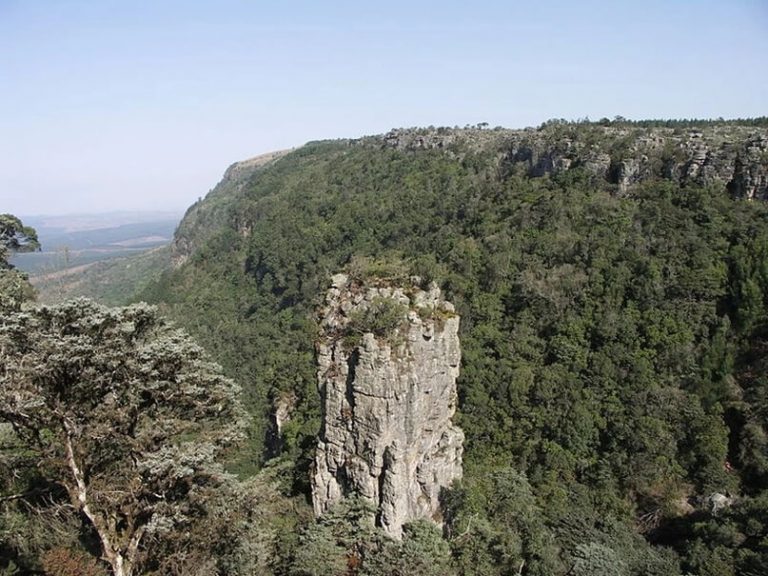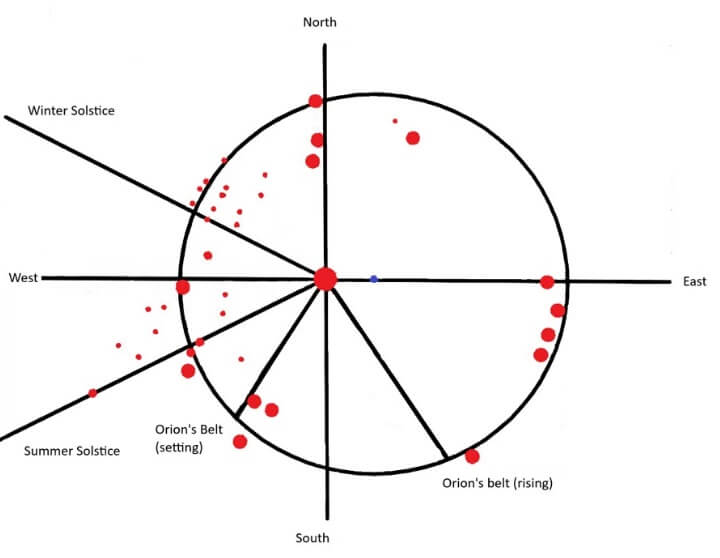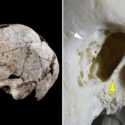Adam’s Calendar: A 300,000-Year-Old Alien Site In Africa?
Adam’s Calendar, which may be the oldest artificial structure still standing, was discovered entirely by chance in 2003. When he lost control of his jet, a South African pilot named Johan Heine was flying above the Mpumalanga region, a hilly area in the country’s east.
His jet crashed into a mountainside after being forced to make an unscheduled landing. Heine narrowly escaped injury and emerged from the plane to see three massive dolomite stones in front of him. These gigantic stones protruded from the ground, each weighing roughly five metric tons (5.5 US tons). In front of them stood a massive stone circle.

The facility is located in an isolated region, with just a few dirt roads providing access. It would likely have remained concealed if the pilot hadn’t discovered it crash-landed.
But what Heine had discovered was remarkable. The megalithic structure appeared to be a very ancient stone calendar, and it was given the name “Adam’s Calendar” in honor of its great age.
Stonehenge in Africa
The pilot had spotted what seemed to be the world’s oldest artificial building. According to some theories, the site was built 300,000 years ago, well before any other indication of human civilization.
If the monument is genuinely that old, it would rewrite human history and almost definitely necessitate the participation of a sophisticated civilization in its creation. Some have speculated that ancient aliens were involved in its construction, using this as a starting point.
An outer stone circle with a diameter of 30 meters (98 ft) surrounds the location. Several monoliths are positioned in a sophisticated design inside the ring. The site’s overall layout appears to be based on astronomical alignments, effectively turning it into a calendar.

Other constructions and stone circles surround the site, connected by several canals and created with complementary alignments. These pathways, according to researchers, are rocky roads that lead to Adam’s Calendar. These canals connect to numerous other ruins and ancient agricultural terraces in the terrain, not simply Adam’s Calendar.
Two upright stones with engravings surround the circle’s center. Many of the building materials, including these stones, appear to have been transported from afar. Although not readily visible at ground level, the original shape of this calendar site can still be seen in aerial pictures.
The usage of these materials and the apparent requirement to view the location from an elevated vantage point indicate that humans did not build it. But why was the site erected here if there was alien involvement long before civilization?
One potentially noteworthy point is the abundance of gold resources in Adam’s Calendar area. Mining shafts dot the landscape, and the Sheba Gold Mine, the world’s richest gold mine, is still located in Mpumalanga. These could have been valuable materials for whoever created the Calendar.
This Calendar continues to function wonderfully today, allowing people to track the time of day and year by following the shadow of the setting sun. The sun’s shadow is cast across the flat stone opposite it by the taller monolith.
Ignored and questioned
The archaeological community was initially uninterested in Johan Heine’s unintentional finding. After the discovery, it took another six years for archaeological investigations to begin on the site, which started in 2009.
Heine had already completed his evaluation of the site by that time. In his early investigation, he discovered that the stone structure had four cardinal orientations, signifying the solstices and equinoxes in the same way as Stonehenge did.
Scientists used geology research, erosion processes over the stone, and the growth of lichens around the rocks to calculate the site’s approximate age. According to some estimations, the Calendar could be 75,000, 200,000, or even 300,000 years old.
Research has also shown the sound frequencies received by rock formations from the Earth beneath them. Scientists have successfully detected sound frequencies and measured them with all acoustic qualities as technology has progressed.
These frequencies have been linked to the ground beneath the enclosure of the stone circles. As a result, the shocking hypothesis that these stones carry electricity, albeit in an unknown manner, has emerged.
The resonant shape of flowers is formed by the sound frequencies from the soil within those stones, representing a type of sacred geometry within the environment. According to writer Michael Tellinger, this site is the earliest of all artificial structures, allegedly built by a long-dead culture.
However, like with every discovery that challenges the existing quo, there are counter-arguments to these notions. According to some orthodox archaeologists, the site is no more than 400 years old, and the stone circle is a cow enclosure.
While this is a plausible interpretation, the site’s size and complexity are uncharacteristic of an agricultural setting. Much of Africa’s indigenous past is also undocumented, adding to the Calendar’s ambiguity.
Maintaining an Open Mind
There is still a lot of information concerning Adam’s Calendar that people need to know. According to research, historians, researchers, and scientists are continuing their efforts to uncover the most profound truths hidden at this place.
Why is the building so complicated if it’s a cow enclosure? If it’s an old calendar, who made it barely 15,000 years after Homo Sapiens was discovered?
Significant investigations are underway to determine the civilization that created it. Scholars will learn more about how that culture lived and existed in the past.



